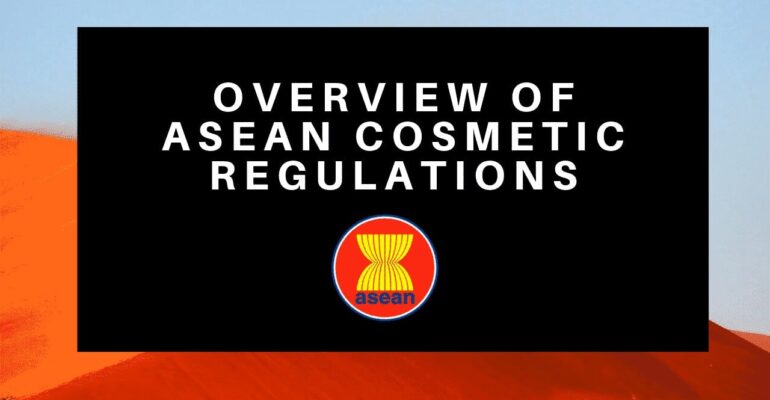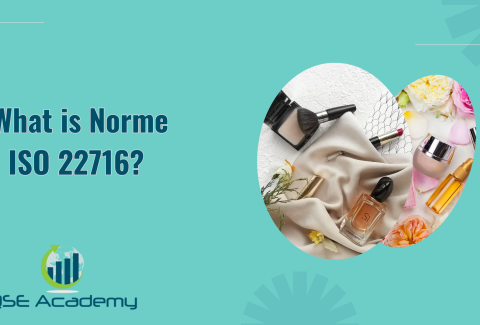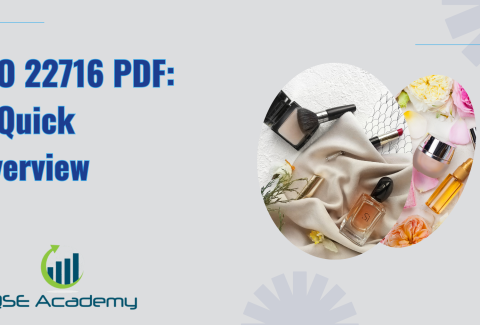Overview of Asean cosmetic regulations
Overview of ASEAN Cosmetic Regulations
Let’s start with the basics: what exactly are the ASEAN Cosmetic Regulations? If you’re a business owner or someone curious about the cosmetic industry in Southeast Asia, understanding these regulations is essential. Don’t worry; I’ll break it down for you in a simple way.
The ASEAN Cosmetic Regulations are a set of rules that govern the safety, quality, and labeling of cosmetic products across the ten member countries of the Association of Southeast Asian Nations (ASEAN). Think of it as a shared rulebook designed to make sure cosmetic products are safe and reliable, no matter where they’re sold in the ASEAN region.
These regulations are part of something called the ASEAN Cosmetic Directive (ACD), which was introduced to harmonize the standards for cosmetics across ASEAN countries. Before the ACD, each country had its own set of rules, which made it challenging for businesses to expand across borders. Now, with the ASEAN Cosmetic Regulations in place, companies can follow one unified framework to market their products in multiple countries with fewer headaches.
Why Do These Regulations Matter?
Great question! The ASEAN Cosmetic Regulations are not just about bureaucracy or ticking boxes. They’re about ensuring that the products we put on our skin are safe to use. By following these regulations, companies can provide high-quality, safe products that consumers can trust. At the same time, they help businesses avoid legal troubles and build credibility in a competitive market.
In short, these regulations create a win-win situation. Consumers get safe and effective products, while companies enjoy easier access to a huge and diverse market of over 600 million people. That’s a big deal for any business looking to grow in Southeast Asia!
The Key Role of the ASEAN Cosmetic Directive
The ASEAN Cosmetic Directive acts like a backbone for the regulations. It lays out the guidelines for everything from product safety assessments to labeling requirements and banned ingredients. It’s a comprehensive framework that ensures fairness and consistency across member countries like Indonesia, Thailand, Malaysia, and Vietnam.
By aligning their rules, these countries have made it much simpler for businesses to expand across borders without having to navigate completely different sets of laws. It’s like having a universal language for cosmetics in the ASEAN region.
So, whether you’re a brand owner, an aspiring entrepreneur, or just someone curious about how the cosmetic industry works in Southeast Asia, the ASEAN Cosmetic Regulations are something you’ll want to know about. They’re a powerful tool for ensuring safety, trust, and business growth—all rolled into one.
Member Countries of the ASEAN Cosmetic Directive
Now that you know what the ASEAN Cosmetic Regulations are all about, let’s dive into who’s involved. These regulations are implemented by the ten member countries of the Association of Southeast Asian Nations (ASEAN). Each country has agreed to follow the ASEAN Cosmetic Directive (ACD), making it easier for cosmetic products to move across borders in the region.
Which Countries Are Part of the ASEAN Cosmetic Directive?
Here’s the list of countries that apply the ASEAN Cosmetic Regulations:
- Brunei
- Cambodia
- Indonesia
- Laos
- Malaysia
- Myanmar
- Philippines
- Singapore
- Thailand
- Vietnam
Each of these countries enforces the same set of standards, thanks to the harmonized approach under the ASEAN Cosmetic Directive. For businesses, this is a huge advantage because you only need to comply with one set of rules to sell your products across all ten countries. It’s like hitting the jackpot if you’re aiming to reach a diverse and growing market!
Harmonized, but with Local Touches
While the ASEAN Cosmetic Regulations are consistent across member countries, there might be slight differences in how they’re implemented locally. For example, some countries may have additional procedures or specific timelines for product notification. It’s always a good idea to check the details for the specific market you’re targeting. Think of it as the same recipe, but each chef might add their own little twist.
Why This Unified Approach Matters
Imagine how frustrating it would be if you had to follow a completely different set of rules in every country. Before the ASEAN Cosmetic Directive, that’s exactly what businesses had to do. It was complicated, expensive, and time-consuming. But now, the ASEAN Cosmetic Regulations provide a unified system that saves time and money while encouraging smoother trade in the region.
For example, a skincare brand in Thailand can expand to Malaysia or Vietnam without having to completely rework its compliance strategy. That’s a game-changer for small and medium-sized enterprises (SMEs) looking to grow their businesses without being buried under red tape.
A Market Full of Potential
By following the ASEAN Cosmetic Regulations, businesses can access a combined population of over 600 million people. That’s a massive opportunity! Each country has its own unique consumer preferences, but the shared regulations make it easier to cater to this diverse market without extra headaches.
So, whether you’re dreaming of launching a new cosmetic line or simply curious about how the industry works in Southeast Asia, knowing the key players involved in the ASEAN Cosmetic Regulations is a crucial first step. With ten countries all working together under the same directive, the possibilities are endless—and far less complicated than they used to be!
Key Requirements Under the ASEAN Cosmetic Regulations
Let’s talk about what it really takes to comply with the ASEAN Cosmetic Regulations. If you’re a cosmetics business looking to enter the ASEAN market, understanding the key requirements is non-negotiable. But don’t worry—I’ll explain everything in plain, simple terms to make it easier for you.
Product Safety Comes First
The number one priority of the ASEAN Cosmetic Regulations is ensuring that every product on the market is safe for consumers. Before you can sell your cosmetics, you need to conduct a product safety assessment. This means testing your product to ensure it doesn’t contain harmful ingredients and won’t cause any unexpected reactions when used as intended.
For this, you’ll need to compile a Product Information File (PIF), which includes details about your product’s ingredients, safety data, and manufacturing process. It’s like creating a passport for your product, showing that it’s safe to travel across borders within the ASEAN region.
Clear and Accurate Labeling
When it comes to labels, the ASEAN Cosmetic Regulations are pretty specific. Your product labels must include all the important details a consumer would need to know. This typically means listing the ingredients, the name and address of the responsible company, usage instructions, and warnings (if any).
Clear, compliant labeling isn’t just about following the rules—it’s about building trust with your customers. When they can easily understand what’s in your product and how to use it, they’re more likely to pick it off the shelf.
Prohibited and Restricted Substances
Under the ASEAN Cosmetic Regulations, certain substances are outright banned, while others are allowed only under strict conditions. This ensures that harmful chemicals don’t end up in cosmetics.
For example, ingredients like lead or mercury are prohibited, and other substances might only be used within certain limits or for specific purposes. This is why staying up-to-date with the latest ingredient lists is so important. No one wants to accidentally use a restricted ingredient and face compliance issues.
The Role of Good Manufacturing Practices (GMP)
Another crucial aspect of the ASEAN Cosmetic Regulations is the requirement to follow Good Manufacturing Practices (GMP). This means your products must be manufactured in a clean and controlled environment, using consistent procedures. GMP ensures that every batch of your product meets the same high-quality standards.
Think of it this way: GMP is like the golden rule of cosmetics manufacturing. It’s about delivering safe and reliable products that customers can trust, every single time.
Why Meeting These Requirements Matters
At first glance, these requirements might seem like a lot of work, but they’re there for a reason. The ASEAN Cosmetic Regulations aren’t just about meeting legal standards—they’re about protecting consumers, building trust, and creating a strong foundation for your brand in one of the world’s most dynamic markets.
By ticking all the boxes—safety assessments, proper labeling, ingredient compliance, and GMP—you’re not just meeting regulations; you’re setting your business up for success in the ASEAN region.
Notification Process for Cosmetic Products
Let’s move on to one of the most important steps in complying with the ASEAN Cosmetic Regulations: the notification process. This step is like getting your product officially recognized before it hits the shelves in the ASEAN market. But don’t worry—it’s not as intimidating as it sounds when broken down into simple steps.
What is the Notification Process?
Under the ASEAN Cosmetic Regulations, businesses must notify the regulatory authority in the country where they want to sell their products. Think of it as giving the authorities a heads-up about your product, including details like what’s in it, how it’s made, and how it’s labeled.
It’s important to note that this is not the same as product registration. Unlike some other markets where you need prior approval, the notification process in ASEAN countries is more straightforward. You’re essentially declaring that your product meets the requirements outlined in the ASEAN Cosmetic Directive (ACD) and is safe for consumers.
How Does the Notification Process Work?
The exact process can vary slightly between ASEAN member countries, but the overall steps are fairly similar:
- Submit a Notification Form
Fill out a form that includes key details about your product, such as its name, function, ingredients, and manufacturer information. - Provide Supporting Documents
You’ll need to submit documentation like your Product Information File (PIF), which includes safety assessments, manufacturing details, and labeling information. - Pay a Fee (If Required)
Some countries might charge a small fee for the notification process. Be sure to check the specific requirements of the country you’re targeting. - Wait for Confirmation
Once you’ve submitted everything, the authorities will review your notification. In most cases, you can start selling your product as soon as you receive confirmation.
Why is This Process Important?
The notification process is a key part of the ASEAN Cosmetic Regulations because it ensures that all products on the market meet the same safety and quality standards. For businesses, it’s a way to demonstrate transparency and compliance, which builds trust with both regulators and consumers.
Without completing the notification process, you risk running into legal trouble, such as fines or having your products removed from the market. It’s a small step that makes a big difference in ensuring your business operates smoothly within the ASEAN region.
Tips for a Smooth Notification Process
- Stay Organized: Keep all your documentation, like the PIF, safety data, and labeling information, in one place so it’s easy to access when needed.
- Double-Check Requirements: While the process is similar across ASEAN countries, small differences can trip you up. Check the specific rules for each market you’re targeting.
- Work with Experts: If you’re feeling overwhelmed, consider partnering with a compliance consultant who knows the ins and outs of the ASEAN Cosmetic Regulations.
Completing the notification process might seem like a lot of paperwork, but it’s an essential step to ensure your products are ready for the ASEAN market. Once you’ve checked this off your list, you’re well on your way to reaching millions of potential customers across the region.
Challenges Businesses Face with ASEAN Cosmetic Regulations
Let’s be honest: navigating the ASEAN Cosmetic Regulations isn’t always smooth sailing. While these regulations are designed to make trade easier across ASEAN countries, they can still present a few hurdles, especially for businesses new to the region. But don’t worry—understanding these challenges is the first step toward overcoming them.
Common Compliance Challenges
- Understanding the Requirements
The ASEAN Cosmetic Regulations cover everything from product safety assessments to labeling and prohibited ingredients. For businesses not used to dealing with such detailed regulations, it can feel like learning a new language. Knowing what’s required for your product in advance is critical to avoiding unnecessary delays. - Staying Updated with Changes
Like any regulatory framework, the ASEAN Cosmetic Regulations are not static. Ingredients lists, labeling rules, or even notification procedures can change. Keeping up with these updates across multiple countries can feel overwhelming, especially if you’re managing a small team. - Managing Documentation
The Product Information File (PIF) is a cornerstone of compliance under the ASEAN Cosmetic Regulations, but creating and maintaining this document can be a challenge. From safety assessments to manufacturing details, there’s a lot to keep track of, and missing even one detail could lead to issues during inspections. - Dealing with Local Variations
While the regulations aim to harmonize standards, some countries might have additional requirements or slightly different interpretations. For example, notification timelines or fees may vary, which can catch businesses off guard if they’re not prepared. - Language Barriers
The ASEAN Cosmetic Regulations apply across a region with many languages. While most regulatory documents are available in English, businesses targeting specific markets might need to translate product labels or documentation into local languages, which adds another layer of complexity.
Tips for Overcoming These Challenges
The good news? These challenges are manageable with the right strategies:
- Invest in Training
Take the time to learn the ins and outs of the ASEAN Cosmetic Regulations. Whether it’s attending workshops or hiring a compliance expert, knowledge is your best tool for staying ahead. - Leverage Technology
Use tools like regulatory tracking software to stay updated on changes to the ASEAN Cosmetic Regulations. Technology can also help you manage documentation and streamline your notification process. - Work with Local Partners
Partnering with local experts or consultants can help you navigate country-specific nuances. They’ll know the ins and outs of local requirements and can save you time and effort. - Stay Organized
Keep all your documentation—like the PIF, safety assessments, and ingredient lists—organized and easily accessible. This will save you from scrambling when it’s time for notifications or inspections.
Turning Challenges Into Opportunities
While complying with the ASEAN Cosmetic Regulations might seem daunting at first, each challenge is an opportunity to strengthen your business. By understanding the regulations and staying proactive, you can set yourself apart in a competitive market and build trust with both consumers and regulators.
With the right approach, these challenges don’t have to hold you back—they can pave the way for long-term success in the dynamic and growing ASEAN market.
Advantages of Complying with ASEAN Cosmetic Regulations
Now that we’ve covered the challenges, let’s talk about the good stuff. Complying with the ASEAN Cosmetic Regulations isn’t just about following the rules—it comes with some amazing benefits for your business. Whether you’re just starting out or looking to expand, getting your compliance game right can open up a world of opportunities.
1. Access to a Huge Market
The ASEAN region is home to over 600 million people. That’s a massive audience for your products! By complying with the ASEAN Cosmetic Regulations, you can sell your cosmetics across all ten member countries without having to jump through different regulatory hoops for each market. It’s like unlocking a single door that leads to multiple destinations.
This harmonized approach makes it easier and faster to introduce your products to new markets, helping you grow your business across countries like Thailand, Malaysia, and Indonesia.
2. Building Consumer Trust
Let’s face it—nobody wants to use products that might be unsafe or unreliable. When your cosmetics comply with the ASEAN Cosmetic Regulations, it signals to your customers that your products meet high safety and quality standards.
This trust can translate into brand loyalty, as consumers are more likely to choose products they know are properly regulated. Plus, clear and accurate labeling (a key requirement under the regulations) helps customers feel confident about what they’re buying.
3. Avoiding Legal and Financial Penalties
Compliance isn’t just good for your reputation; it also protects you from costly fines and legal issues. Failing to meet the requirements of the ASEAN Cosmetic Regulations could result in penalties or even having your products removed from the market.
By staying compliant, you save yourself the headache of dealing with enforcement actions and focus instead on growing your business.
4. Competitive Advantage
Let’s be real: the cosmetic industry is highly competitive, especially in a region as dynamic as ASEAN. Businesses that comply with the ASEAN Cosmetic Regulations have a clear edge over those that don’t. Compliance showcases your professionalism and commitment to quality, which can help you stand out from the crowd.
It also makes it easier to work with distributors and retailers who prefer or require their partners to meet regulatory standards.
5. Smoother Operations Across Borders
Imagine how much simpler your operations can be when you only need to follow one harmonized set of rules across multiple countries. The ASEAN Cosmetic Regulations make cross-border trade more efficient, reducing the time and cost involved in navigating different regulations.
This streamlined process allows you to focus on the exciting stuff—like product innovation and marketing—without getting bogged down in regulatory red tape.
Why These Advantages Matter
At the end of the day, the ASEAN Cosmetic Regulations aren’t just about ticking boxes—they’re about setting your business up for long-term success. From gaining access to a massive market to building trust and avoiding penalties, compliance is an investment that pays off in multiple ways.
By embracing these regulations, you’re not just meeting legal requirements—you’re building a solid foundation for your brand in one of the world’s most exciting and fast-growing regions. That’s a win-win for both your business and your customers!
How to Stay Updated on ASEAN Cosmetic Regulations
The ASEAN Cosmetic Regulations are the foundation for entering the ASEAN market, but like any set of rules, they can evolve over time. Staying updated is essential to ensure your business remains compliant and competitive. Let’s explore some practical ways to keep yourself informed without feeling overwhelmed.
1. Follow Industry Associations and Official Websites
One of the best ways to stay in the loop is to regularly check resources from industry associations and government agencies. Many ASEAN member countries have dedicated websites or departments focused on cosmetic regulations. These platforms often publish updates, new ingredient restrictions, and procedural changes.
For example:
- The ASEAN Secretariat website provides updates on regional regulatory frameworks.
- Local regulatory bodies like Malaysia’s National Pharmaceutical Regulatory Agency (NPRA) or Thailand’s FDA often share country-specific guidance.
Bookmarking these sites can be a lifesaver for keeping tabs on the latest developments in the ASEAN Cosmetic Regulations.
2. Subscribe to Newsletters and Alerts
Many industry organizations offer newsletters tailored to the cosmetic industry. Subscribing to these can provide you with regular updates straight to your inbox. Look for associations that specialize in ASEAN cosmetics or broader global regulatory topics.
Some newsletters even include analysis, breaking down complex regulatory changes into simple, actionable steps—perfect for staying ahead without dedicating hours to research.
3. Join Industry Events and Webinars
Trade shows, conferences, and webinars are excellent opportunities to learn about updates to the ASEAN Cosmetic Regulations while networking with other professionals. These events often feature speakers who are experts in the field, providing valuable insights and tips.
Plus, attending these gatherings allows you to ask specific questions and hear about real-world challenges and solutions from others in the industry.
4. Build Relationships with Local Experts
Having a local partner or consultant in the countries you’re targeting can make all the difference. These experts are often the first to know about regulatory changes and can help you adapt quickly. Whether it’s a compliance consultant or a distributor familiar with the ASEAN Cosmetic Regulations, having someone on the ground is a great advantage.
5. Use Technology to Stay Informed
There’s no shortage of tools and software to help track regulatory updates. Platforms like regulatory databases or monitoring software can send you alerts whenever there are changes to the ASEAN Cosmetic Regulations. While these tools may require an upfront investment, they can save you time and reduce the risk of missing crucial updates.
6. Be Proactive with Internal Training
If you have a team, it’s important to keep everyone informed. Conduct regular training sessions on the ASEAN Cosmetic Regulations, especially if there are changes that impact your products or processes. This ensures everyone is on the same page and reduces the chances of non-compliance.
Why Staying Updated Matters
Regulations aren’t set in stone—they change to reflect new research, trends, and safety concerns. Staying informed about the ASEAN Cosmetic Regulations helps you:
- Avoid costly mistakes.
- Keep your products competitive.
- Build trust with regulators and consumers.
Ultimately, staying updated is about future-proofing your business. It ensures you’re always prepared, no matter what changes come your way. With a little effort and the right strategies, you can navigate these updates confidently and continue thriving in the ASEAN market.
Conclusion: Embracing ASEAN Cosmetic Regulations for Success
By now, we’ve taken a deep dive into the world of the ASEAN Cosmetic Regulations, exploring their purpose, key requirements, benefits, and even the challenges businesses face. Whether you’re new to the cosmetic industry or looking to expand into the ASEAN market, one thing is clear: understanding and complying with these regulations is a must.
The ASEAN Cosmetic Regulations are not just a set of rules—they’re a pathway to creating safe, high-quality products that consumers can trust. They offer businesses the opportunity to access a vibrant market of over 600 million people while simplifying compliance across multiple countries. From product safety assessments to proper labeling and notification processes, these regulations help businesses maintain consistency and credibility.
Why Compliance Matters
Following the ASEAN Cosmetic Regulations isn’t just about meeting legal requirements; it’s about building a solid foundation for your brand. Compliance ensures that your products are safe, your customers are happy, and your business is prepared to thrive in a competitive market. It’s an investment in your company’s future and reputation.
Your Next Steps
If you’re ready to embrace the ASEAN Cosmetic Regulations, start by ensuring your products meet all the necessary requirements. Stay organized, educate yourself and your team, and don’t hesitate to seek expert advice when needed. Remember, these regulations are here to help—not hinder—your business growth.
With the right approach and a commitment to quality, the ASEAN Cosmetic Regulations can become a key driver of your success in one of the most dynamic regions in the world.
👋 Hi, I’m HAFSA, and for the past 12 years, I’ve been on a journey to I’m an engineer specialized in the food and agricultural industry Let’s make ISO less about stress and more about success! 🙏
make ISO standards less intimidating and more approachable for everyone.
Whether it’s ISO 9001, ISO 22000, or the cosmetics-focused ISO 22716,
I’ve spent my career turning complex jargon into clear, actionable steps
that businesses can actually use. I’m not here to call myself an expert—I prefer “enthusiast” because I truly love what I do.
There’s something incredibly rewarding about helping people navigate food safety and quality management systems
in a way that feels simple, practical, and even enjoyable.
When I’m not writing about standards, you’ll probably find me playing Piano 🎹, connecting with people, or diving into my next big project💫.
I have a Master’s in QHSE management and over 12 years of experience as a Quality Manager
I’ve helped more than 15 companies implement ISO 9001, ISO 22000, ISO 22716, GMP, and other standards
My clients include food producers, cosmetics manufacturers, laboratories, and service companies
I believe quality systems should be simple, useful, and efficient
Outside of work, I play piano and love learning something new every day
Looking for More Resources on ISO 22716?
If you found this article helpful, explore our premium resources designed to help you achieve ISO 22716 certification efficiently:
- 📦 Complete Documentation Package for ISO/IEC 22716 2017: Get all the essential templates and documents you need for fast, easy implementation.
- 🎓 Online Course on ISO/IEC 22716 2017 : Enroll in our comprehensive training to master the key concepts and practical steps toward certification.
- 📋 ISO/IEC 22716 2017 Checklist: Download our detailed checklist to ensure you’ve covered every step of the process.
These resources are tailored to meet your needs and ensure a smooth certification journey. Explore them today and get one step closer to success!
















